Shookville
A Walk in Shookville
If you wander the winding roads of Milan in Upper Dutchess County, New York, you may miss the hamlet of Shookville on Shookville Road in the blink of an eye. The walls and foundation of the old stone church remain to mark the center of the long-forgotten community, and this stone plaque is displayed near the Town Historian’s office in the Milan Town Hall.
Although little of Shookville remains, the articles, journals, and stray thoughts of unofficial local historian and writer Burton Coon (1869-1942) remain to tell the story of its past. In “Shookville: Then and Now” published in the Rhinebeck Gazette, he writes,
“If some of the Shookville boys, who years ago left their native hamlet should come back to the old home they would find only a plowed field, with here and there a shrub or a grape vine or an old garden flower to mark the spot.
Kate April’s house and garden and the loom that wove such rugged tapestry have long since disappeared and only a hedge of tansy and a few clumps of Bouncing Bet have survived the change.
David Doyle and Jennie Cramer would look in vain for the little picket gate in the stone wall, and the shrubs on either side of the stone walk leading to the house and grape vine and the little garden with its pinks and Sweet William and lavender. Many a bouquet did Mother Doyle pick from this yard and bring to church on a Sunday afternoon, an offering for God’s altar.“
“And Gilbert Myers will remember the old home with over-shadowing plum trees, white in the Springtime and the little barn where the cow and chickens were kept and the hay loft where he used to dream of the days to come and their possible fruitage.“
“I might remind Silas Burger and the Wagner boys and girls and many others who were born or brought up in Shookville. I can count eight houses, each of which has been occupied by a family within my recollection, and now have almost entirely disappeared. I have been in all of these houses; spent there many a social hour; went to school with some of the children; went to prayer meeting with most of them; and felt perfectly safe in them at any time of day or night. I know of at least five other places where house have stood, all within a mile of the church.”
Near the remains of the old stone church, the gravestones of many Shookville residents still stand and tell another story of this “deserted village”. Burton Coon’s parents as well as his father William Coon’s three children and a first wife lost in the space of three years 1863-1865 from small pox and then diptheria are buried within the black iron fence. How many others in the hamlet suffered the same fate? William Coon documented his grief in his journal. He described how his teenage daughter Jemima, who was very fond of the little five year old daughter of Philip and Charlotte Coopernail, was determined to visit the sickly child. Jemima and the child both died from diptheria within days of each other in September 1865. “And they are buried inside the iron fence in the old Shookville cemetery, the little one at the feet of the older one. So they are together there in death. At the top of the little one’s stone is the figure of a broken rosebud, and underneath her name and age are the words: ‘Go with me.’ Her friend went…”
“I miss the old inhabitants, too. I remember Philip, Henry, and Charlotte Coopernail, John Ostrander, Uriah St. Paul and his family, Charlie and Will Van Etten and their mother, and many others besides those whom I have already written about, most of whom are dead.“
Just a short walk from the church the Coon family farmhouse still stands, though renovated. The stone wall and the stone foundation for the barn remain. The farm lands have been divided, and houses can be viewed where none appeared from 1862-1988.
The deeds and Burton’s description of his father’s purchases of land from 1850-1862 reveal more about the hamlet of Shookville.
“On the 21st day February, 1850, Peter Shook conveyed to my father 22 acres, 2 roods and 10 perches of land for $857.37 1/2… This land was to the east of the buildings and some of it was uncleared… On the 2nd day of May 1853, George Shears, who lived where Mrs. Kathryn Frazier now lives, conveyed to my father 44 acres, 3 roods, and 13 perches of land for $1,344.94. This consisted of a wood lot and two cultivated field along the east side of the farm… On the 30th day of April 1862, David Coopernail and Electa, his wife, conveyed to my father 35 acres, 2 roods, and 29 perches of land for $1,427.25. This constitutes what is now the north part of the present farm.”
What more can we discover about Shookville: the “Deserted Village”? The stories can be remembered and retold. The beauty can still be experienced. Slow down; don’t blink; take a stroll or a bike ride and explore the magnificence of Nature and feel the history all around. We can still imagine the community gathering at church socials, the children playing in the orchard and going to a one-room school house, the farmer plowing the field, the farmer’s wife picking vegetables in her kitchen garden. A quiet yet active time; a hard yet cherished life…
Let’s end with Burton Coon’s closing words in his article “Shookville: Past and Present”.
“Truly, we have here a deserted village. Would that some writer with more genius than I have might describe it and tell its story. For these plain people have served their day and generation and made history as certainly as any people anywhere. I have long wanted to do them justice and if I have failed, it is only because I could not do any better. I thank the Gazette for the opportunity.” Burton Coon
Bonnie Wood https://markingthemoment.squarespace.com/places/shookvilleadesertedvillage
Shookville
Case’s Corner (formerly Milanville)
Cokertown
Enterprise
In development.
Jackson Corners
This section is very much under construction, not all photos are appropriately named yet. We are a volunteer group! Jackson Corners has an extraordinary history and strong sense of identity today.










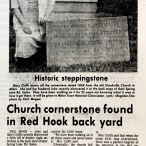

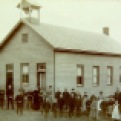
















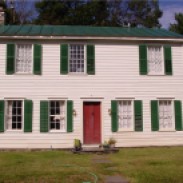


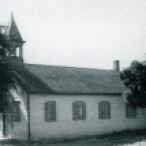
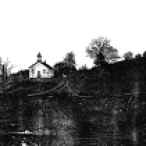



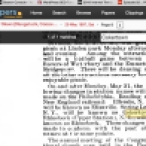



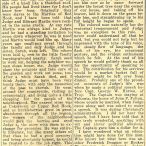


































A wealth of info on the Hamlet of Shookville already posted and available via the above below. Enjoy!
http://www.internetfamilyfun.com/shookville/index.htm
LikeLiked by 1 person
Thanks, we will move this up to the top of the page, thank you!
LikeLike
I don’t understand why “Jackson Corners” has been left out as a viable hamlet. It involved a blacksmith shop, a mill, a general store, the first firehouse of Milan, the passing railroads which carried passengers from Jackson Corners. The fact that the cannon traveled the roads in Jackson Corners by General Knox to the Fort during the revolutionary war. The burial grounds of the “Last Mohican”. The Fulton homestead, as well as the “Singers” of Singer sewing machines and “Wu;litzers” of the famous piano company. Also, the railroad depot on Academy Hill Road alongside the Roeliff Jansen Kill. I would think that the town (when Patrick Higgins) was historian has a wealth of information in the towns files on this very very very historic hamlet. I also do not understand why the history of Milan starts with “Wilcox” instead of the “Livinstons” and the tenant farmers who had their own places to sit in church which was not with the “ELITE”. This would show how the town evolved and grew. Also, cemetaries are left out. Also exgremely historic!!!
LikeLike
OOPS! I made a mistake about the Layfayette Lodge when I said it was Leapin Lena’s. It was Leapin Lena’s BEFORE the Lodge. It there anyway you can correct this information for me?
LikeLike